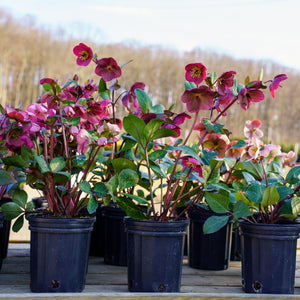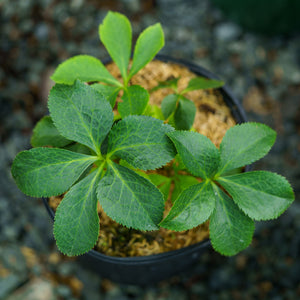Helleborus: Winter Elegance in Bloom
Welcome to this week's edition of our "Plant of the Week" series. As winter lingers and the garden lies dormant, few plants match the resilience and quiet beauty of Helleborus, more commonly known as the Lenten Rose. These hardy, evergreen perennials bloom when little else dares—brightening up shady garden spaces from late winter through early spring with striking flowers in a wide range of colors and forms. Whether you're looking to bring color to a woodland border, texture to a foundation bed, or early-season interest to containers, Hellebores are an essential addition to the shade garden. Let’s take a closer look at what makes the Lenten Rose such a garden staple—and how you can use it in your own landscape.
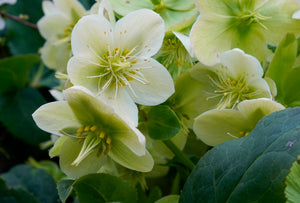
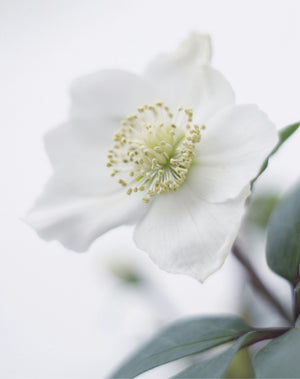
What Makes the Lenten Rose Special?
Lenten Roses (Helleborus x hybridus and Helleborus niger) are beloved for their frost-resistant blooms, which emerge just as the worst of winter begins to fade. Their blossoms, which often resemble single or double roses, range in color from crisp white and pale pink to rich burgundy, smoky black, and even lime green. Some varieties, like Confetti Cake or Dark Picotee, offer intricate speckling or contrasting edges, adding complexity and visual intrigue to each bloom.
Beyond the flowers, Hellebores shine with their evergreen foliage. The glossy, palmate leaves provide structure and year-round interest, particularly in shaded garden areas. Many newer varieties, such as Penny’s Pink and Frostkiss Illumi Lime, feature marbled or veined leaves, offering an extra ornamental layer even when the plants aren’t in bloom.
Lenten Roses are a gardener’s dream in terms of resilience. They’re drought-tolerant once established, unfazed by cold snaps, and highly resistant to deer and rabbits. Their preference for part shade to full shade makes them ideal for tough spots where sun-loving plants struggle. Best of all, they require minimal maintenance and will gently naturalize over time, forming slow-spreading clumps that return reliably year after year.
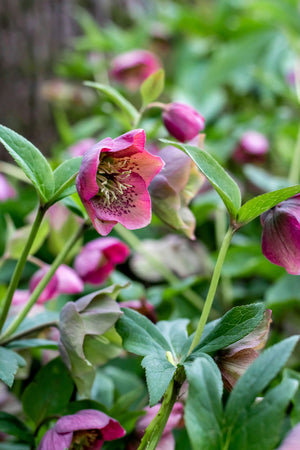
How to Use Lenten Roses
The versatility of Lenten Roses makes them suitable for a variety of uses in both traditional and modern garden designs. Their early blooms, evergreen foliage, and array of colors and patterns allow them to be used in creative and functional ways.
Woodland Borders & Naturalized Beds: For a naturalized woodland effect, plant Lenten Roses beneath deciduous trees where winter sun can warm the soil and trigger early flowering. Varieties like Brandywine—known for its blend of soft pinks, purples, and creamy tones—or the delicate Childhood Sweetheart blend beautifully with ferns and shade-loving groundcovers.
Shaded Foundation Plantings: Lenten Roses excel around the foundation of the home, where shade and structure come together. Use marbled-foliage types like Viv Valeria or Dorothy’s Dawn to bring subtle texture to these often-overlooked areas. Their evergreen leaves will remain tidy year-round, and their blooms add welcome color near entrances and walkways.
Accent and Focal Points in Shade Gardens: To create a focal point in the shade garden, cluster several dramatic varieties together. A grouping of New York Night, with its deep, almost-black blooms, next to Anna’s Red and the lush double blooms of Wedding Crasher creates a moody and elegant palette that immediately draws attention.
Containers for Winter and Early Spring Color: Though typically grown in beds, Hellebores perform well in containers, especially during their bloom season. Try planting Pink Frost or Mont Blanc in ceramic pots on a shaded patio or porch to enjoy their blooms up close. These plants provide structure and color at a time when most containers are empty.
Pollinator-Friendly Plantings: While not heavily nectar-rich, Lenten Roses still attract early-season pollinators such as bees, particularly on milder days. Planting varieties like Mahogany Snow or Merlin near other early bloomers can help build a pollinator-friendly corridor before the main garden season kicks in.
Mixed Beds and Understory Plantings: Integrate Hellebores with other perennials like heuchera, brunnera, and epimedium for a diverse shade garden. Varieties like Tropical Sunset or Sandy Shores offer warm-toned blooms that contrast nicely with the cool tones of surrounding foliage.
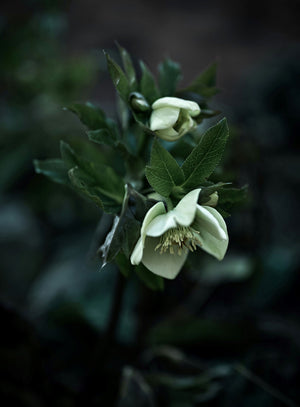
How to Care for Lenten Rose
Lenten Roses are among the most low-maintenance perennials you can grow, making them an excellent choice for both new and experienced gardeners.
Planting: Choose a spot with part to full shade and well-drained, humus-rich soil. Avoid heavy clay or wet areas, especially in winter. Amend the planting hole with compost or aged leaf mold to give plants a strong start. Planting in fall allows roots to settle in before the bloom season.
Watering: Water regularly during the first year. Once established, Hellebores can tolerate short dry spells but perform best with consistent moisture. Varieties like Honeyhill Joy and Maid of Honor may produce fuller blooms with reliable watering through the winter and early spring.
Pruning: In late winter, remove old, damaged foliage to make way for fresh growth and to showcase the blooms. Cut leaves close to the base, taking care not to damage new buds emerging at the crown. This simple cleanup improves airflow and prevents disease.
Fertilizing: Feed plants in early spring with a balanced, slow-release fertilizer or a top dressing of compost. Avoid overfeeding—too much nitrogen can reduce bloom production. Marbled-foliage types like Penny’s Pink benefit from organic mulch applied annually to retain nutrients and moisture.
Dividing: Lenten Roses do not need frequent division and often resent being disturbed. If needed, divide large clumps in early fall and give them time to re-establish before winter. Otherwise, let them be—they thrive best when left undisturbed.
Pests & Diseases: Generally pest-free, Hellebores may occasionally suffer from aphids, black spot, or leaf blight. Prompt removal of affected foliage and good airflow usually resolves these issues without the need for chemicals.
CONCLUSION
The Lenten Rose (Helleborus) is a must-have for any gardener seeking four-season interest, cold-hardy resilience, and stunning winter-to-spring blooms. Its remarkable ability to thrive in shade, resist pests, and bloom in the bleakest months makes it a standout in any landscape. Whether you're planting Viv Rosa beneath a maple tree, adding Confetti Cake to a winter-themed container, or letting Romantic Getaway brighten a woodland path, there's a hellebore for every mood and garden design.
The Helleborus Collection
Sold Out
Sold Out

